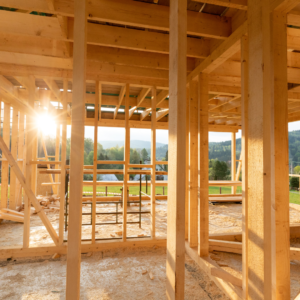 With the recent rise in lumber costs and overall building materials, coupled with the historic escalation in home sale prices, many homeowners are asking if they need to increase their insurance coverage that comes into play if they have a claim that results in their home needing to be re-built.
With the recent rise in lumber costs and overall building materials, coupled with the historic escalation in home sale prices, many homeowners are asking if they need to increase their insurance coverage that comes into play if they have a claim that results in their home needing to be re-built.
First off, lets clarify your homeowners insurance and that term you see often listed as “Coverage A Dwelling” on your policy. The numerical figure next to it represents the amount covered to re-build your home, back to the way it stood before the damage/claim occurred. Your Dwelling Coverage represents how much the insurance company is agreeing to pay to re-build your home. It is important that your home is covered for 100% of the estimated re-build value of your home. The re-build or re-construction cost of your home is determined by each insurance company’s replacement cost estimate software, which is why each company may produce a different figure when calculating the estimate. The re-build value of your home is exactly as it sounds and does not take into account the market value of the home and the land it sits on. So it is natural to see differences in your home’s market value, appraised value (for a bank loan), and the re-construction cost.
With the market value being a non-factor, it has been concerning that over the last 14 months, material costs have increased significantly, plus the added difficulty of a shortage in the local labor market. We asked local business owner Jesse Caprio of J.P. Caprio Builders Inc. in Barnstable, MA, how this is impacting business, and he stated they have seen a 300% increase in lumber prices, especially framing stock. He also said that on average, total contract prices are 25% to 35% higher compared to 14 months ago. Caprio recommends that every builder should be implementing an escalation clause in contracts right now (to guard against further increases in material costs).
With that in mind, it is important to work with your agent to evaluate your home’s dwelling value to see if you need to increase your coverage. Home insurance policies have a “co-insurance clause” that dictates if your home dwelling value is less than 80% of the total re-build value, then the insurance company will only replace or repair your home up to the percentage you are below the total value.
EXAMPLE
If your home’s re-build value is $1M and your dwelling coverage is only $700,000, and a large tree falls on your home causing $100,000 in damage, the insurance company may only pay out $70,000. Even worse, if there is a total loss, they could cap your coverage at $700,000 leaving you with a large financial exposure.
To mitigate against market fluctuations in building costs, many home policies will include a line item for additional Coverage A dwelling coverage. This additional coverage costs extra with most insurance companies, but sometimes is automatically included. The best additional coverage offered with most insurance companies is Guaranteed Replacement Cost. This guarantees that the insurance company will pay to re-build your home regardless of how high the building cost is over your stated dwelling coverage on your policy. But again, keep in mind your home has to be insured for the full estimated re-build cost to begin with.
Another measure to safeguard against being underinsured is extra coverage called Inflation Guard. Some companies automatically build it into the policy so you don’t have to worry about adding it. Most policies include a 4% Inflation Guard, which in previous years had resulted in overinflating the re-build cost of some homes, but this year, with the various factors affecting the market, can be too low. The idea behind this is to protect your home over time by keeping your dwelling coverage in line with the full replacement cost of your home.
Ultimately every insurance company has a different figure for what your home’s replacement value is so it is important to consult with your agent and have them review your home, especially if you have made any upgrades. They will be able to determine if your dwelling coverage is adequate or if you should consider increasing it. We also highly suggest that you review your policy to ensure you have at least 25% additional dwelling coverage included, and consider upgrading that to a higher percentage or Guaranteed Replacement cost so you will not have to worry about your insurance company capping the cost to re-build your home.
Have questions about your homeowners insurance? Contact us for help assessing your policies and find out if you need increased coverage.
STILL HAVE QUESTIONS?
Send them our way and we will do our best to help!

Mike Redfield
Vice President | PRIVATE RISK
Mike Redfield is Vice President – Private Risk Advisor with RogersGray. From his previous professional experience he has worked with clients to provide insurance solutions for those planning for, and in retirement.
Insurance is confusing to many, Mike specializes in making it as painless as possible while putting together plans for his clients and presenting in an understandable way. Mike grew up in Yarmouth and now resides in Plymouth with his wife, children and their dog Mokie. You can connect with Mike on LinkedIn or by email.
